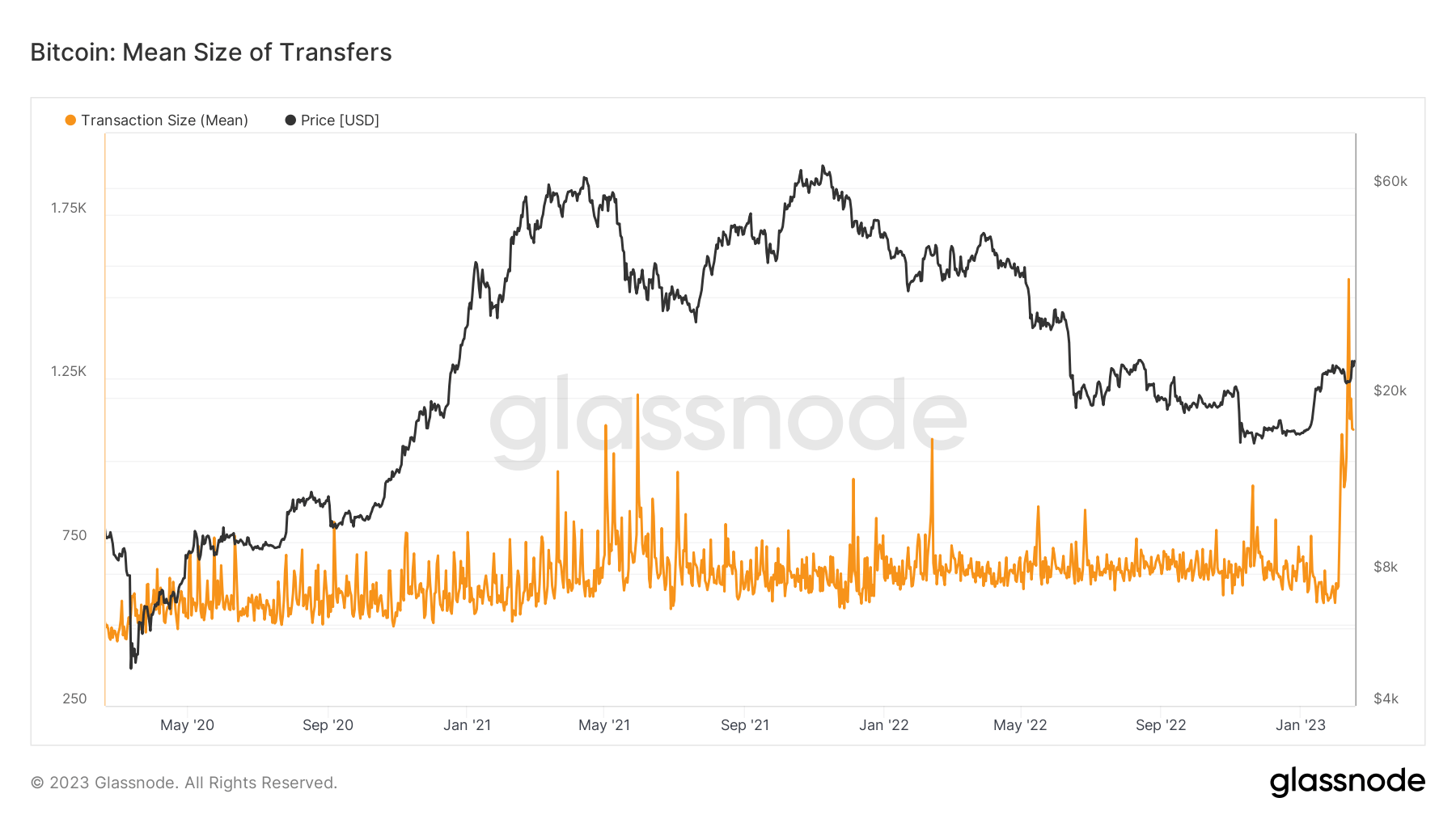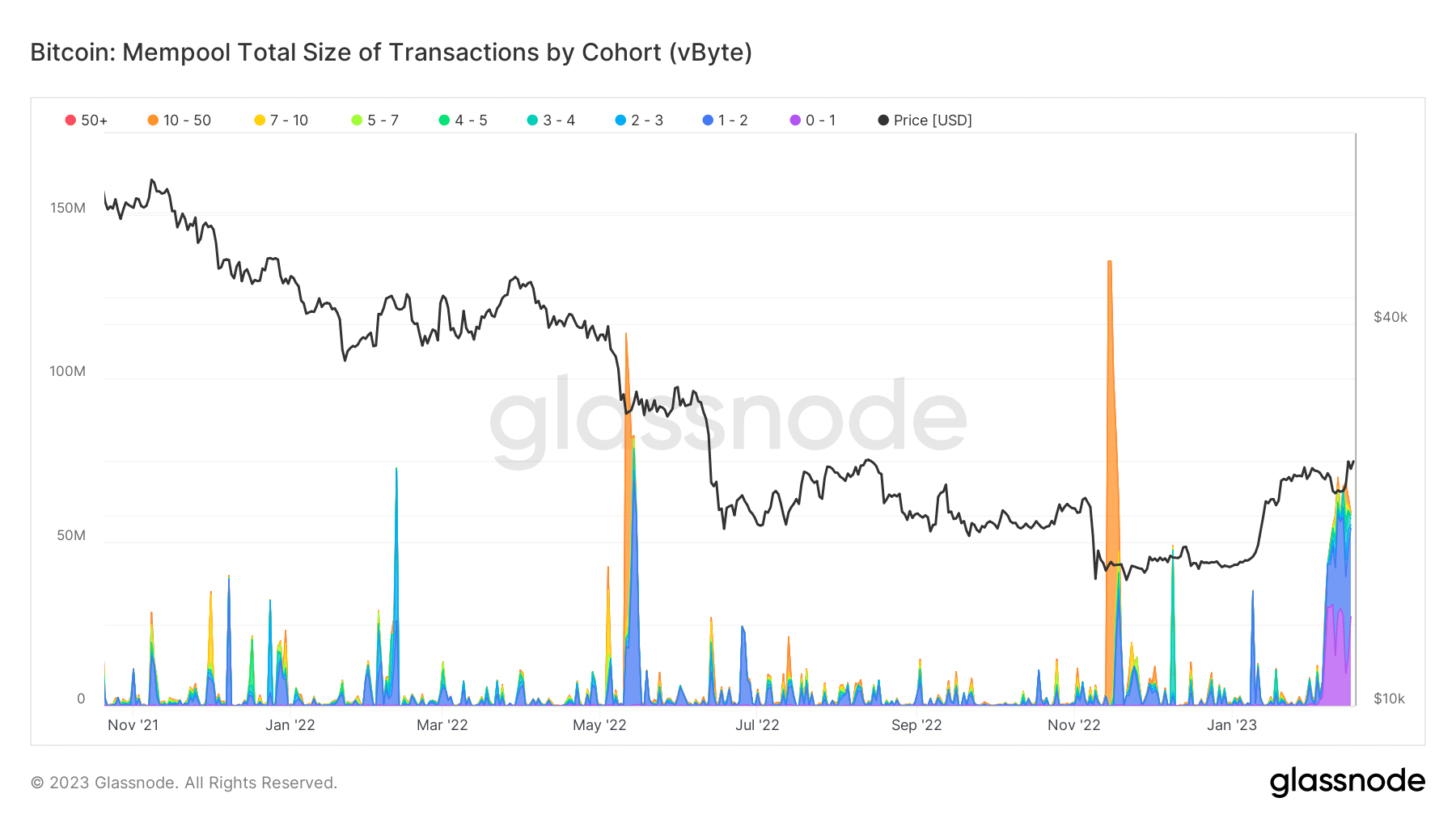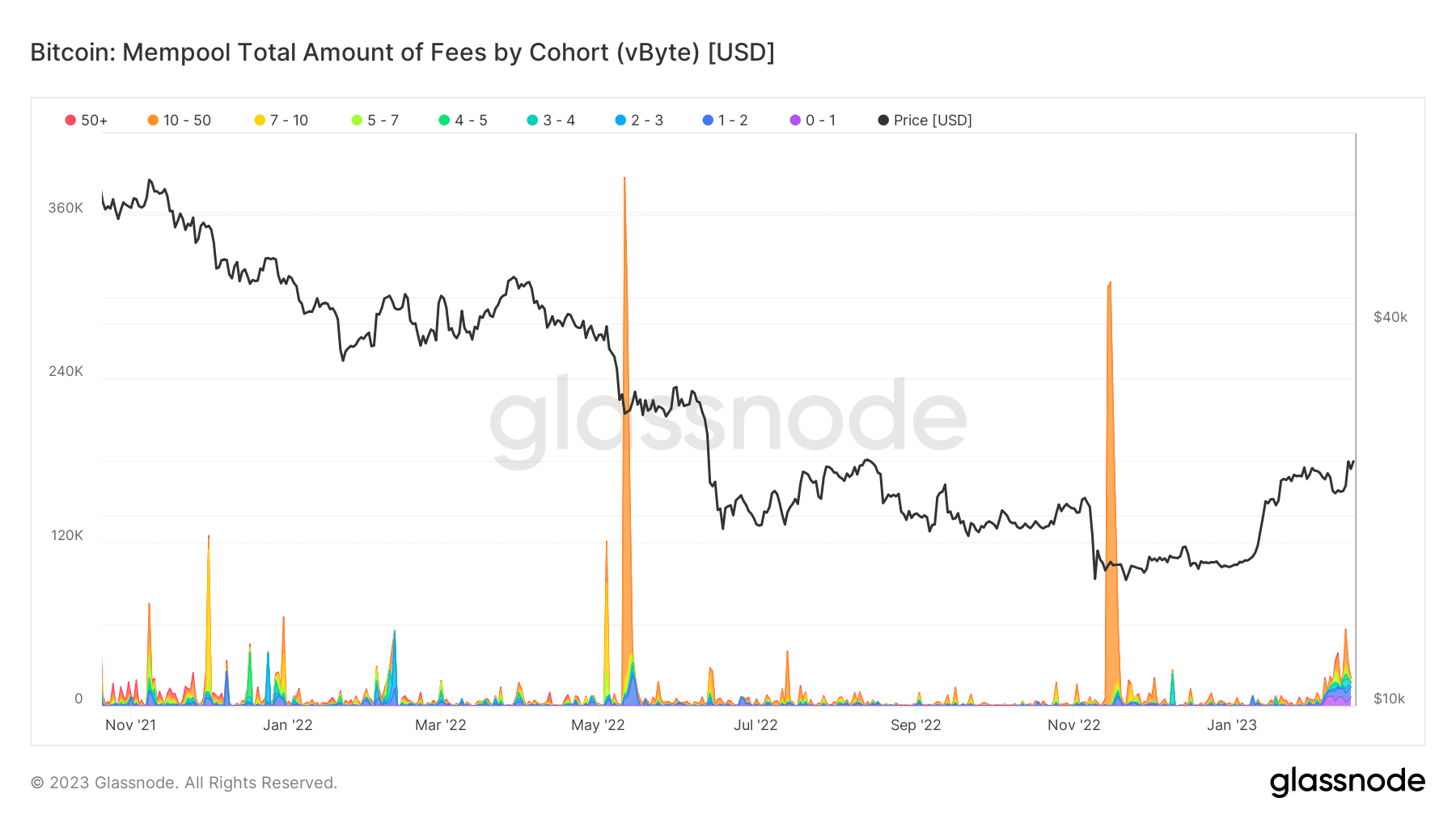The introduction of the Ordinals Protocol, which enables the development of Bitcoin-based NFTs, has coincided with significant changes to mempool activity and transaction size, new data by CryptoSlate and Glassnode show.
What are Bitcoin Ordinals?
The ability to mint non-fungible tokens directly onto Bitcoin’s blockchain with all associated content, such as images and videos, is made possible by Ordinal NFTs, also known as digital artifacts or inscriptions.
Launched in January 2023, the Ordinals protocol allows users to interact with and exchange individual satoshis that may contain unique inscribed data. This new approach to creating NFTs on Bitcoin takes advantage of changes included in the Bitcoin Taproot upgrade. It involves placing the complete content of the NFT directly on-chain, providing a novel way to explore, transfer, and receive such tokens.
When combined with the SEC’s decision to exempt Bitcoin from the “security” classification, some experts say a bullish outlook for Bitcoin begins to emerge, which could positively impact the entire cryptocurrency ecosystem.
Quantitative analysis
According to recent Glassnode data sourced in conjunction with CryptoSlate, the aftermath of Ordinals has positively impacted Bitcoin. For example, the mean size of transactions increased by over 100%, from 600 B (bytes) to 1100 B.

In addition, the below chart illustrates that Ordinal transactions have low satoshi fees (purple color dominant).

The total fees (USD Value) of transactions waiting in the mempool in different size (vByte) cohorts – have increased since FTX collapsed, and inscriptions have lifted the baseline fee from 1 – 4 satoshis.

Glassnode reports that the mean block size upper range for Bitcoin has increased significantly since the launch of Ordinals, rising from 1.5-2.0 MB to 3.0-3.5 MB within a few weeks. Notably, on Feb. 1, Inscription 652, the first piece in the Taproot Wizards collection, set a new record as the largest block and transaction in the history of Bitcoin, reaching 4 MB in size. Additionally, on Feb. 17., CryptoSlate reported on a fart that had been uploaded to the Ordinal network, inscription 2042.
Qualitative analysis
Glassnode shows that while the Ordinal network has had a significant impact on Bitcoin transaction hash size and cost,…
Click Here to Read the Full Original Article at Bitcoin (BTC) News | CryptoSlate…
























